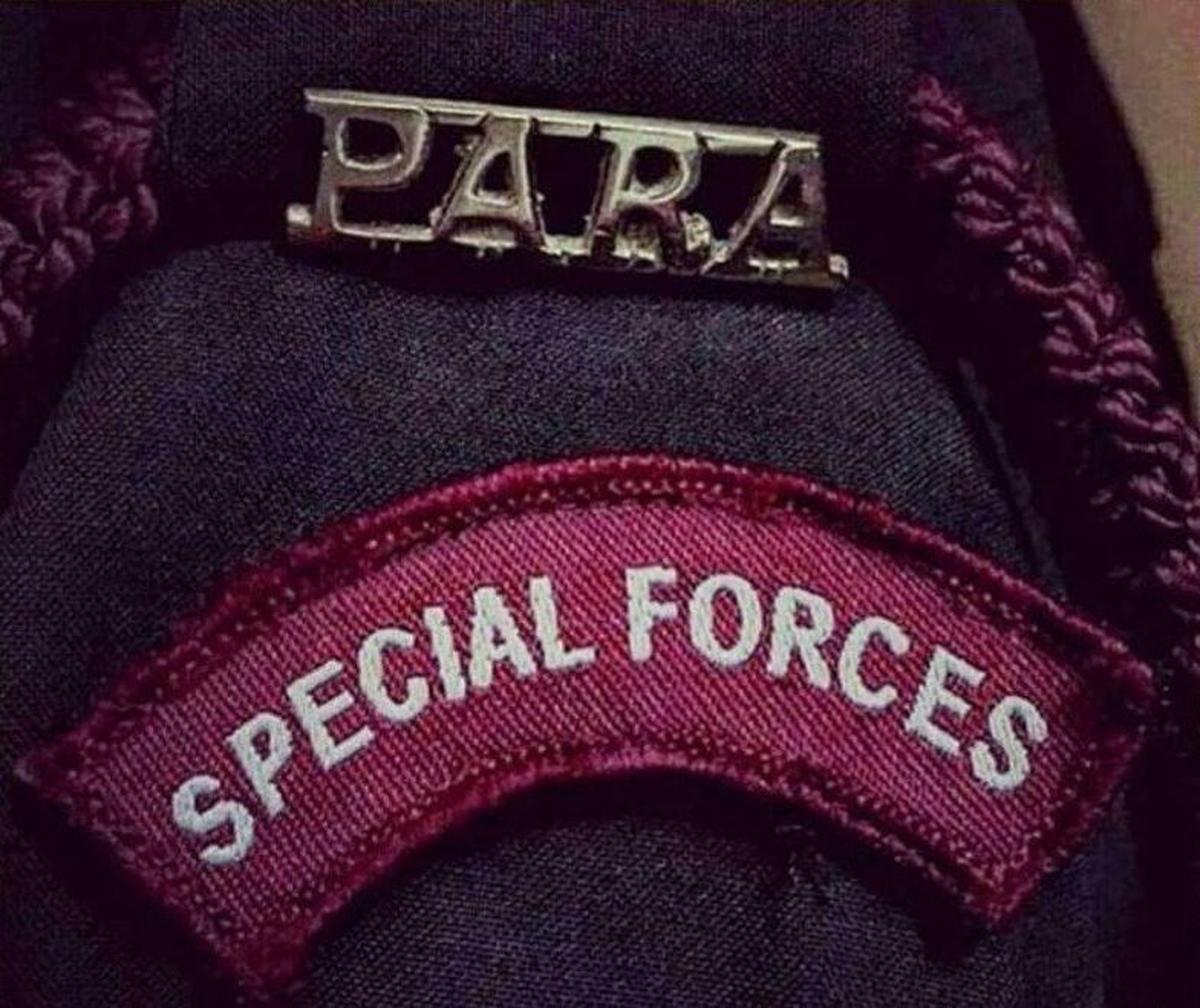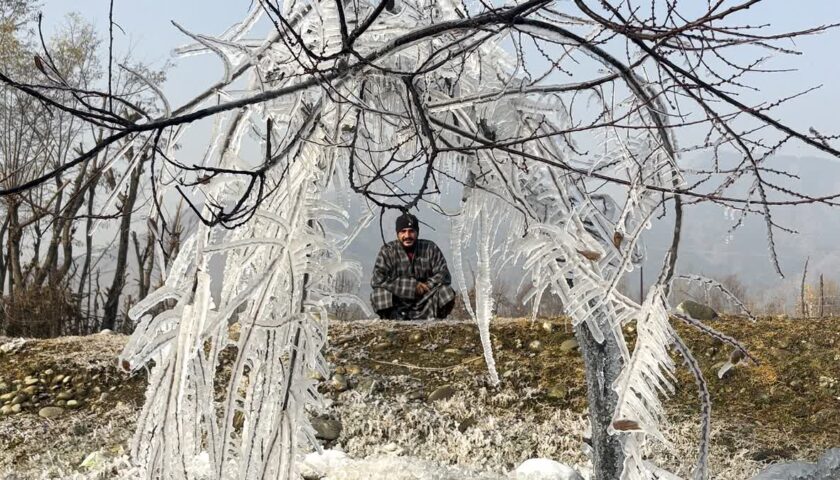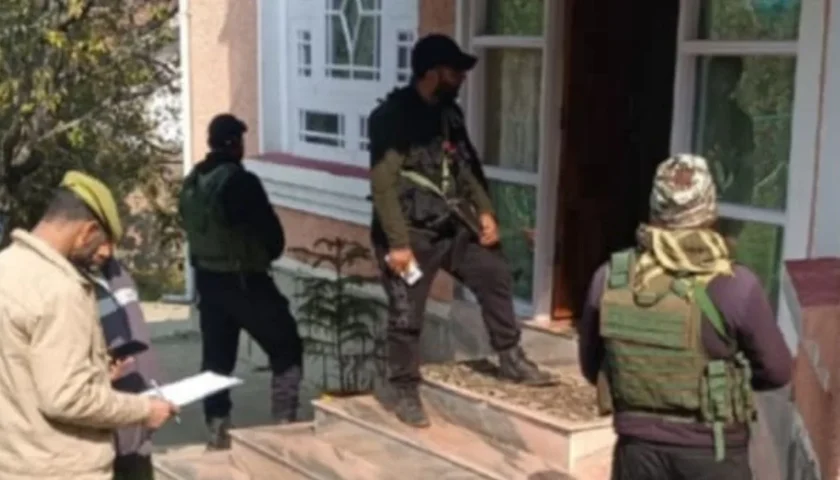Tragedy in Kashmir: Para-Commando Found Dead in Kokernag During Anti-Terror Operation
By: Javid Amin | 10 October 2025
In a dark and sorrowful development from South Kashmir, the Indian Army has recovered the body of one of two elite para commandos who vanished during a high-altitude anti-terror operation in the forested regions of Kokernag, Anantnag district. The mission, launched on October 6, was already complicated by extreme weather, treacherous terrain, and heavy snowfall. While the body of one missing soldier was found intact—alongside his rucksack and weapon—the search continues amid immense challenges for the second. Preliminary findings suggest hypothermia as the cause of death, with no signs of hostile engagement. This tragic incident highlights the peril that soldiers face in the Kashmir mountains, where nature often proves to be as formidable an opponent as insurgents.
Setting the Stage: Kashmir, Conflict, and Terrain
To fully appreciate the gravity of this incident, one must first understand the environment in which security forces operate in Kashmir and why such missions carry enormous risk.
Kashmir: A Landscape of Conflict and Complexity
Since the late 1980s, the Kashmir Valley has seen persistent insurgency, counterinsurgency operations, militant infiltration from across the Line of Control (LoC), and intense security responses. Despite fluctuations in intensity, militant networks like Lashkar-e-Taiba (LeT), The Resistance Front (TRF), Jaish-e-Mohammad, Hizbul Mujahideen, and local outfits continue to attempt to challenge state authority.
The southern districts of Kashmir, notably Anantnag, Kokernag, Shopian, Pulwama, Kulgam, have often been hotspots for militant hideouts, infiltration routes, and counter-terror camps. Dense forests, jagged ridges, high-altitude passes, and severe winters make operations extremely difficult. Past operations in and around Gadole (or Gadool/Gadool) forests have drawn repeated attention by security forces for their utilization by militants as hideouts.
The Gadole Forests and Kokernag Area
The area at the center of this tragedy is described in reports as the Gadole (or Gadool / Gadole-Gadool / Gadole forest region) in and around Kokernag. It is part of a rugged and forested stretch that lies in the southern Anantnag district. Security sources say it connects to high-altitude terrain and links with the Kishtwar-Doda region in Jammu, making it strategic and logistically challenging.
Indeed, in September 2023, the Gadole/Kokernag area was the site of a fierce encounter that claimed the lives of Colonel Manpreet Singh, Major Ashish Dhonchak, DSP Humayun Bhat, and a rifleman Pradeep Kumar. That operation highlighted how militants had long held bases in this terrain.
This past history amplifies why Indian security forces maintain persistent operations in this area, especially when actionable intelligence indicates militant presence.
Winter, Snowstorms, and the Killers Within
Operating in the mountains of Kashmir is not just a matter of confronting insurgents; the elements themselves become adversaries. Snowstorms, avalanches, sudden temperature drops, whiteout conditions, and freezing winds can cripple mission plans and endanger lives.
When soldiers enter remote stretches at high altitude during winter, they are vulnerable not only to combat but to hypothermia, frostbite, disorientation, and physical exhaustion. Even a few inches of unexpected snowfall or reduced visibility can make or break a mission.
The present tragedy underscores how in Kashmir, the domain is not merely man versus man, but man versus terrain, man versus weather.
The Mission: Anti-Terror Operation in Kokernag
Understanding the objective and sequence of the operation helps illuminate how events may have unfolded.
Intelligence Inputs and the Launch of Operation
According to multiple media sources, the counterinsurgency sweep in Kokernag was triggered by intelligence input about militants possibly hiding in the dense Gadole forests.
On or around October 6, the Army launched a combing operation in the Gadole forest, targeting likely militant hideouts. The mission was part of broader efforts to deny terrorists shelter, disrupt supply lines, and neutralize potential sleeper cells.
Deployment of Elite Forces: 5 PARA (Special Forces)
The two missing soldiers belonged to the 5 PARA (Special Forces) unit, an elite contingent within the Indian Army tasked with high-stakes missions, including direct action, reconnaissance, and counterterrorism.
These commandos often operate ahead of regular troops, venturing into hostile terrain where communication is difficult, extraction is uncertain, and stakes are high.
Loss of Contact and Onset of Severe Weather
According to official statements and reports, communication with the two commandos was lost on October 6 during the mission. Agents attempting to reach them via radio, satellite, or GPS tracking were unsuccessful.
Simultaneously, a severe snowstorm struck the region, leading to whiteout conditions—a phenomenon in which snow and wind reduce visibility to near zero. The storm and disorientation likely caused the commandos to lose direction, separate from their team, and be rendered isolated in desperate conditions.
One official communication from the Chinar Corps posted on X (formerly Twitter) confirmed that on the intervening night of October 6–7, the team encountered a severe snowstorm along the Kishtwar range, and two soldiers went out of communication.
Thus, the operation moved from a standard anti-terror sweep to a desperate search-and-rescue – a transition that would test the endurance and resolve of all involved.
The Search & Rescue Effort
From the moment contact was lost, security forces initiated a massive mission to locate the missing commandos. But the challenges were monumental.
Mobilization & Resources
To track down the missing troopers, the Indian Army deployed a combination of:
-
Ground search teams braving dense forest, steep slopes, and snowbound trails
-
CRPF and Jammu & Kashmir Police units cooperating in multi-agency coordination
-
Sniffer dogs trained to detect human presence or scent trails
-
Helicopters and drones to scan from the sky, produce aerial imaging, and guide ground teams
-
Thermal imaging, night-vision gear, and satellite assets, where possible
-
Local guides and trackers familiar with the forest paths and terrain
Hundreds of personnel were reportedly involved in the search, meticulously combing every inch of the forest zone and adjacent ridgelines.
Terrain, Dense Vegetation, and Weather Obstacles
The primary difficulty in rescue was the terrain itself: thick undergrowth, ravines, steep slopes, hidden crevices, and snow-laden paths. In places, terrain becomes virtually inaccessible without mountaineering equipment or exposure to risk.
The weather dramatically amplified these obstacles. Whiteout conditions, continuing snowfall, freezing temperatures, and unstable snowpacks thwarted movement, aerial overheads, and visibility. Reports mention that search teams had to frequently pause or retreat when weather worsened.
Likewise, communication became erratic, and GPS signals or satellite connectivity may have been blocked or disrupted by storm effects.
Timeline & Search Updates
-
October 6: The operation began, and communication with the two commandos was lost during the night.
-
October 7–8: Search operations commenced and intensified. Helicopters, drones, and ground teams were deployed.
-
October 9: The Indian Army officially announced the missing status of two commandos in the Ahlan Gadole forest region, while acknowledging severe weather hampered efforts.
-
October 10: The body of one of the commandos was recovered by search teams.
As of the latest reports, the search continues in full force for the second missing commando.
Discovery & Aftermath
Recovery of the Body
On October 10, security forces located the body of one missing para commando in the snowbound forest of Gadole in Kokernag.
Officials stated that the deceased soldier was found with his rucksack and weapon intact, suggesting that he carried out his duties until the end.
The location and posture of the body reportedly offered signs that no gunfire exchange had taken place, and no external injuries or bullet wounds were found.
Cause of Death: Hypothermia, Not Hostile Action
Preliminary investigations and medical assessments suggest hypothermia as the likely cause of death. Given the cold, storm conditions, drastic temperature drop, and absence of external wounds, security and forensic teams ruled out foul play or insurgent engagement.
In a snowstorm and high-altitude environment, a soldier can rapidly lose body heat, suffer exhaustion, disorientation, and succumb before reinforcements can reach. The presence of the rucksack and weapon suggests he remained mission-capable until his final moments.
Status of the Second Commando
While one comrade was found, the search for the second missing commando continues vigorously. All resources remain committed, as teams comb through dense vegetation, inaccessible ridges, and high-altitude zones.
Authorities have maintained that locating the second is a top priority, both for strategic reasons and for honoring the duty and sacrifice of the soldier.
Reaction, Mourning & Military Response
Official Statements & Army Response
The Indian Army’s Chinar Corps (responsible for operations in Kashmir) has publicly acknowledged the recovery and expressed solemn grief at the loss. In its communication, the Corps reaffirmed its undeterred resolve to continue operations and recover the second commando.
High-ranking officers have likely coordinated with the families of the fallen, offered condolences, and mobilized maximum support for search operations and medical or logistical backup.
National and Public Reactions
Across India, tributes poured in for the fallen soldier—posts on social media, statements from political leaders, and widespread acknowledgment of the soldier’s bravery. The incident resonated deeply with the public, underscoring the dangers faced by security personnel in Kashmir.
Media outlets covered the discovery extensively, offering retrospectives of past operations in Kokernag and broader analyses of the challenges in Kashmir’s counterinsurgency operations.
The Human Side: Families, Colleagues, and Comrades
For the family of the fallen soldier, this news is a personal tragedy. The agony of waiting, hope for survival, and sudden grief at confirmation is a whirlwind of emotions no family should face. Army protocols ensure immediate communication with next-of-kin, support by military psychologists, and ceremonial honors.
Comrades in the 5 PARA unit and broader armed forces carry a heavy burden — the loss of a peer, a friend, a brother-in-arms. The solidarity among forces becomes more poignant in such times, as they rally to continue operations while honoring the fallen.
Analysis: What Went Wrong? Lessons & Risk Factors
No operation is flawless, especially under extreme weather and difficult terrain. While the final formal inquiries will determine precise failure points, several contributing risk factors stand out:
1. Weather Underestimation & Forecasting Gaps
The onset of a sudden snowstorm and whiteout conditions suggests either rapid weather changes or underestimation of the region’s micro-climate behavior. Even well-planned missions can suffer if forecasts are inaccurate or short-range changes are unpredictable.
2. Terrain Intelligence & Route Mapping
Operating in forests like Gadole demands deep familiarity with terrain, possible escape routes, snow drifts, avalanche potential, and hidden gullies. Any deviation from known paths can lead to disorientation, especially under snow.
3. Communication Disruption & GPS Failures
Loss of communication is a recurring hazard in such operations. Signal jamming, satellite shadowing, terrain interference, or device failures can sever contact. If commandos lose link with the main party, their ability to coordinate or call for help diminishes.
4. Physical Preparedness & Cold Weather Gear
While commandos are highly trained, even top-tier soldiers can succumb if insulation, thermal gear, or oxygen levels are inadequate. Sustained exertion in subzero cold drains stamina and accelerates heat loss.
5. Search & Rescue Response Timing
The window for successful rescue in high-altitude cold weather is narrow. Delayed mobilization or inability to reach isolated points quickly reduces survival prospects. Weather constraints slowing down rescue teams compounds the danger.
6. Redundancy & Backup Protocols
In missions where isolation is expected, additional redundancy in team composition, support squads, or fallback paths can reduce risks. Ensuring that commandos move in small operating groups with overlapping coverage might help avoid catastrophic isolation.
Historical Backdrop: Kokernag & Gadole in Past Encounters
This tragedy is not the first in these forests — history offers sobering parallels.
2023 Kokernag Encounter
In September 2023, a major counterinsurgency operation in the Gadole forests resulted in the deaths of Colonel Manpreet Singh, Major Ashish Dhonchak, DSP Humayun Bhat (J&K Police), and Sepoy Pradeep Kumar. The militants used dense terrain to their advantage, and the operation underscored the risk that forested high-altitude zones pose.
This earlier operation brought to light the use of jungle warfare tactics by militants, who exploit remote forest hideouts, night cover, and terrain familiarity.
Persistent Militancy in Gadole
Long before recent years, the Gadole/Kokernag region has been cited as a recurrent militant base, infiltration corridor, and shelter zone. Military operations often sweep parts of this forest, but sustaining presence is difficult due to terrain and logistical constraints.
Thus, this latest tragedy may be part of a sustained cycle of operations, withdrawals, regrouping, and renewed search for militant networks in the high forests of Kashmir.
The Larger Picture: Implications and Reflections
Operational Risks in High-Altitude Warfare
This incident starkly reminds us that in mountainous warfare, danger comes as much from nature as from the enemy. The combination of extreme cold, rugged terrain, and limited communication demands that counterterror operations be planned with redundancy, robust meteorological data, and emergency protocols.
Need for Enhanced Technology & Support
In future missions, the deployment of better satellite communication links, rescue beacons, thermal imaging drones, avalanche detection systems, and robotic search platforms might tilt odds slightly more toward safety. Integration of AI predictive modeling for weather, terrain risk zones, and backup routing could be game-changers.
Balancing Aggression with Caution
While proactive strikes and sweeps are critical to denying militants safe zones, protocols must balance aggression with safety margins. In adverse weather windows, operations may need to be delayed or staged carefully.
Morale & Public Sentiment
Such sacrifices—especially when not in full enemy combat—tend to galvanize public support, remind people of the human cost borne by armed forces, and shape discourses of national security. They also increase scrutiny on training, logistics, and equipment adequacy for mountain warfare.
Bottom-Line
The recovery of a para commando’s body from the snowbound forests of Kokernag is a somber chapter in India’s security operations in Kashmir. Amid intelligence-driven missions, harsh terrain, unpredictable weather, and mortal risk, the line between success and tragedy is strikingly thin. As the search continues for the second missing soldier, the sacrifice of the fallen must remind us of the extraordinary burdens borne by those who serve in remote, hazardous frontiers.
This incident is a cautionary tale — a reminder that every mission in such unforgiving environments must carry with it plans for weather contingencies, rescue protocols, and technological support. Above all, it is a human story of courage, loss, and the relentless will to push onward even when nature itself becomes a foe.




